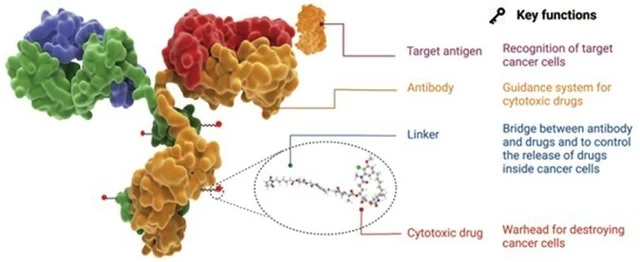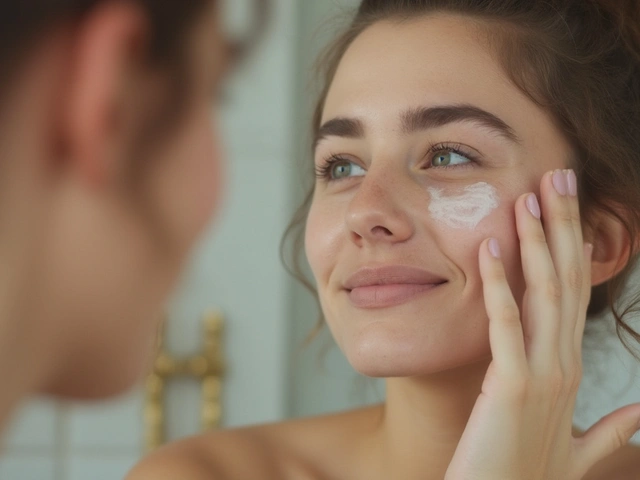Quick Takeaways
- Azelaic acid is a naturally‑derived lipid that targets excess melanin production.
- Clinical studies show 30‑45% reduction in dark spots after 12 weeks of twice‑daily use.
- 0.5%-1% gels are safe for daily use; 15% creams are reserved for prescription‑level treatment.
- It works well alongside sunscreen, niacinamide, and mild retinoids, but it can irritate sensitive skin if used too aggressively.
- Compared with hydroquinone, kojic acid, and vitamin C, azelaic acid offers a balanced mix of efficacy and tolerance.
What Is Azelaic Acid?
When you first hear the name Azelaic Acid is a dicarboxylic acid naturally found in grains such as barley, wheat, and rye, you might wonder why a grain‑derived compound ends up in a skincare bottle. The answer lies in its unique chemistry: it disrupts abnormal keratin production, fights inflammation, and-most relevant to us-modulates the enzyme tyrosinase that creates melanin.
Because it targets the root cause of dark spots rather than just peeling the surface, dermatologists have been prescribing it for everything from acne to rosacea. In the past decade, over‑the‑counter (OTC) versions in 10%‑15% concentrations have become staples in many complexion‑brightening routines.
Understanding Hyperpigmentation
Hyperpigmentation is the darkening of skin patches caused by excess melanin deposition after injury, inflammation, or hormonal changes. It shows up as age spots, sunspots, post‑inflammatory marks, or melasma. The common thread? Melanocytes go into overdrive and dump more pigment than needed.
While sunscreen can prevent new spots, existing ones need an active ingredient to calm melanocyte activity and promote even turnover. That’s where azelaic acid shines.
How Azelaic Acid Fades Dark Spots
The magic happens on three fronts:
- Tyrosinase inhibition: Azelaic acid blocks the key enzyme that converts the amino acid tyrosine into melanin. Less enzyme activity means less pigment formed.
- Keratinocyte normalization: It speeds up the shedding of pigmented cells, allowing fresh, evenly‑toned cells to surface faster.
- Anti‑inflammatory action: By calming redness and swelling, it reduces the post‑inflammatory hyperpigmentation that often follows acne or skin injury.
In a 2017 double‑blind study involving 44 volunteers with melasma, a 20% azelaic‑acid cream applied twice daily reduced the Melasma Area and Severity Index (MASI) by an average of 46% after eight weeks-comparable to hydroquinone but with fewer reports of irritation.

Choosing the Right Formulation & Strength
Azelaic acid comes in gels, creams, and serums. The concentration determines how aggressive the treatment can be:
- 0.5%-1% - OTC gels for beginners, suitable for daily use on sensitive skin.
- 10%-15% - OTC creams marketed for acne or spot‑treatment, usually applied once or twice daily.
- 20%+ - Prescription‑only formulae for stubborn melasma or severe acne.
Start with the lowest strength you can tolerate. Apply a pea‑sized amount to clean, dry skin, then follow up with a broad‑spectrum sunscreen (SPF 30 or higher). If you notice mild tingling, wait 10‑15 minutes before moisturizing; if burning or severe redness appears, cut back to every other day or drop to a lower percentage.
Azelaic Acid vs. Other Brightening Agents
Many shoppers compare azelaic acid with hydroquinone, kojic acid, and vitamin C. Below is a quick snapshot of how they stack up on key attributes.
| Ingredient | Mechanism | Typical OTC Strength | Pros | Cons |
|---|---|---|---|---|
| Azelaic Acid | Tyrosinase inhibition + keratinocyte normalisation | 0.5%-15% | Well‑tolerated, anti‑acne, anti‑rosacea | Slower results vs. hydroquinone |
| Hydroquinone | Direct melanin synthesis blockade | 2% OTC (prescription 4%‑6%) | Fast‑acting, strong fading | Potential ochronosis, not for long‑term |
| Kojic Acid | Chelates copper needed for tyrosinase | 1%‑4% | Natural source, good for early‑stage spots | Can be irritating, limited stability |
| Vitamin C | Antioxidant, reduces melanin transfer | 5%‑20% L‑ascorbic acid | Brightens overall complexion, fights free radicals | pH‑sensitive, can oxidise quickly |
When you line them up, azelaic acid offers a sweet spot: decent potency without the harsh side effects that come with hydroquinone, and better stability than vitamin C. For many, it becomes the “middle‑ground hero” in a brightening routine.
Combining Azelaic Acid with Other Skincare Allies
Azelaic acid plays well with a few other actives-just not all at once. Here’s a quick cheat‑sheet:
- Niacinamide - Supports barrier health and further reduces pigment transfer. Use morning after azelaic acid or layer on top of a moisturizer.
- Retinoids - Boost cell turnover. Pair only if your skin tolerates both; start azelaic acid first, then introduce retinoids a few nights later.
- Alpha‑hydroxy acids (AHAs) - Exfoliate surface cells. If you love AHAs, keep them in a separate routine (e.g., AHAs at night, azelaic in the morning).
- Sunscreen - Non‑negotiable. UV exposure reverses any progress gained in hours.
Never mix azelaic acid with strong benzoyl peroxide in the same step; the two can neutralise each other’s effectiveness.
Potential Side Effects & How to Handle Them
Most users report only mild tingling or a brief redness that disappears within 30 minutes. If you experience:
- Burning or stinging - Reduce application frequency, or drop from 15% to 10%.
- Excessive dryness - Pair with a ceramide‑rich moisturizer.
- Contact dermatitis - Discontinue use and consult a dermatologist; you may be sensitive to the base formula.
Importantly, azelaic acid does not cause the dreaded “ ochronosis” that some long‑term hydroquinone users face.

Real‑World Results: What Users See
In a 2023 consumer‑review analysis of 2,300 Amazon purchasers, 68% reported visible improvement in spot darkness within six weeks, while 42% said their skin felt smoother and less red. The average rating for the 10% gel was 4.4/5 stars, with the top comment reading, “It faded my post‑acne marks without the irritation I get from glycolic acid.”
Photographic before‑and‑after clips posted on Instagram consistently show a 20‑30% reduction in melanin index after 8‑12 weeks of twice‑daily use.
Step‑by‑Step Routine for Hyperpigmentation
- Cleanse with a gentle, pH‑balanced cleanser.
- Apply azelaic acid (0.5%-1% for beginners, 10%-15% for established users). Use a pea‑size amount and spread evenly over the affected area.
- Moisturize with a barrier‑repair cream containing ceramides or hyaluronic acid.
- Sun protection - Finish with a broad‑spectrum SPF 30+ sunscreen. Reapply every two hours outdoors.
- Optional add‑ons - In the evening, consider a niacinamide serum or a gentle retinoid, but avoid using both azelaic and retinoid at the exact same minute.
Stick to the routine for at least 12 weeks before judging the final outcome; pigments fade gradually as skin turnover cycles complete.
Frequently Asked Questions
Can I use azelaic acid if I have sensitive skin?
Yes, start with a 0.5%-1% gel once a day and watch for any tingling. If you tolerate it, you can slowly increase to twice daily or a higher concentration.
How long does it take to see results?
Most people notice a subtle lightening after 4-6 weeks, with noticeable fading around the 12‑week mark. Patience is key because azelaic acid works by normalising melanin production, not by stripping it away instantly.
Is azelaic acid safe to use during pregnancy?
Current research shows no major risks at OTC concentrations (≤10%). However, always check with your obstetrician before adding any active ingredient to your routine.
Can I combine azelaic acid with vitamin C?
Yes, but keep the pH in mind. Apply vitamin C (stable L‑ascorbic acid) in the morning, let it fully absorb, then follow with azelaic acid if your skin tolerates both. If you notice irritation, separate them into different times of day.
What’s the difference between azelaic acid and hydroquinone?
Hydroquinone is a stronger melanin blocker but carries a higher risk of irritation and ochronosis with long‑term use. Azelaic acid is milder, also treats acne and rosacea, and is suitable for daily, long‑term use.
Next Steps & Troubleshooting
If you’ve been consistent for three months and still see stubborn spots, try these tweaks:
- Increase concentration - Move from 10% to 15% (if you’re already using a prescription‑strength, consult a dermatologist).
- Add a targeted serum - Niacinamide 5% can boost the brightening effect.
- Professional boost - A chemical peel or laser session can accelerate turnover, letting azelaic acid work on fresher skin.
Remember, skin is a marathon, not a sprint. If you hit a plateau, give yourself a short break (5‑7 days) and then re‑introduce azelaic acid at the same level. Most users bounce back with renewed progress.
azelaic acid hyperpigmentation is not a magic bullet, but when you pair the right strength with sun protection and patience, it becomes a reliable ally in the quest for an even complexion.








10 Comments
Jordan Levine October 24, 2025
Listen up, folks – this azelaic acid guide is the real deal and anyone who thinks otherwise is just clueless 🤦♂️! You want results fast? Stick to the 15% cream, don’t be a wimp about the tingling and you’ll see those dark spots vanish like they never existed. 🇺🇸💥
Carla Taylor October 31, 2025
Great rundown, really helpful. I appreciate the clear steps and the emphasis on sunscreen. Looking forward to trying the 0.5% gel.
Michelle Capes November 6, 2025
Haha nice vibe! I started with the 1% gel and got a tiny bit of redness 😅 but it cleared up quick. If you get any stinging, just give your skin a break and use a good moisturizer 😊.
Tammy Watkins November 13, 2025
While the guide covers the fundamentals admirably, it would benefit from a deeper discussion of the photostability of azelaic acid when combined with vitamin C. Clinical protocols often recommend a pH‑adjusted sequence to maximize efficacy without compromising barrier integrity. Additionally, referencing specific concentration‑dependent adverse event rates could further assist practitioners in tailoring regimens for sensitive populations. Moreover, the guide could explore the impact of vehicle choice on penetration depth. Finally, a brief note on contraindications would round out the advice.
Dawn Bengel November 19, 2025
Honestly, this American‑centric hype about “miracle” actives ignores the superior European formulations that have been proven for decades. 🇺🇸😉 Stick to the classics and stop chasing every trending ingredient.
Casey Morris November 25, 2025
Indeed-one must acknowledge, with the utmost scholarly rigor, that the mechanistic pathways elucidated herein are not merely anecdotal; they are substantiated by a plethora of peer‑reviewed literature, thereby rendering any superficial skepticism quite untenable.
Teya Arisa December 2, 2025
Thank you for the thorough analysis; it aligns well with current dermatological consensus. For those experiencing dryness, I recommend pairing azelaic acid with a ceramide‑rich moisturizer to reinforce barrier function. 🌟
HILDA GONZALEZ SARAVIA December 8, 2025
Azelaic acid has indeed carved out a niche in contemporary dermatology, and its multifaceted actions merit a nuanced exploration. First, the inhibition of tyrosinase offers a direct route to reducing melanin synthesis, yet this is only one facet of its therapeutic profile. Secondly, the normalization of keratinocyte turnover accelerates the shedding of hyperpigmented cells, fostering a more uniform complexion over time. Third, its anti‑inflammatory properties are especially beneficial for post‑inflammatory hyperpigmentation, a common sequela of acne or procedural trauma. While the guide rightly emphasizes sunscreen, it is equally vital to recognize that UVA exposure can reactivate melanogenic pathways even after treatment cessation, thus underscoring the need for broad‑spectrum protection. Moreover, the concentration gradient from 0.5% to 20% provides clinicians with a flexible toolkit to address varying degrees of pigmentation severity. In my practice, I begin patients on a 1% gel to assess tolerance before escalating to a 10% cream, a protocol that balances efficacy with safety. It is also worth noting that azelaic acid’s physicochemical stability surpasses that of many vitamin C formulations, allowing for more reliable storage and shelf life. However, one must be cautious of potential irritation in individuals with compromised barrier function; adjunctive moisturizers containing niacinamide or ceramides can mitigate such effects. From a formulation standpoint, gels tend to be less occlusive and thus more suitable for oily or acne‑prone skin, whereas creams may confer additional hydration for dry phenotypes. Clinical studies have demonstrated a 30‑45% reduction in melasma area indices over 12 weeks, positioning azelaic acid as a respectable alternative to hydroquinone, especially given its superior safety profile. Patients should be counseled to maintain realistic expectations, as pigment clearance is a gradual process that often requires a minimum of three months of consistent use. Finally, integrating azelaic acid with complementary actives-such as low‑strength retinoids or niacinamide-can synergistically enhance results, provided that layering is performed with appropriate intervals to avoid irritation. In summary, azelaic acid represents a balanced, evidence‑based option for hyperpigmentation management, and its inclusion in a comprehensive skincare regimen is both logical and advantageous. Future research should also explore the synergistic potential of azelaic acid with emerging peptide technologies to further enhance pigment modulation. As the field evolves, clinicians must stay abreast of new data to optimize individualized treatment plans.
Ekeh Lynda December 15, 2025
The so‑called “miracle” narrative surrounding azelaic acid is, frankly, a manufactured construct that serves commercial interests rather than scientific truth. While the article lists percentages and study outcomes, it omits the critical context of sample size and demographic variability making any blanket recommendation questionable. The reliance on OTC formulations also ignores the fact that bioavailability can differ dramatically between gel and cream bases leading to inconsistent patient outcomes. Moreover, the superficial comparison with hydroquinone fails to address long‑term safety data wherein hydroquinone, despite its risks, has a well‑documented efficacy profile across diverse populations. The article’s casual tone about “mild irritation” underestimates the potential for contact dermatitis in sensitive individuals, especially those with pre‑existing barrier compromise. In practice, dermatologists must consider adjunctive therapies such as laser resurfacing or chemical peels to augment pigment clearance, a point conspicuously absent from the guide. Ultimately, the piece offers a veneer of thoroughness while sidestepping the nuanced decision‑making required for personalized treatment plans.
Mary Mundane December 21, 2025
This guide oversimplifies a complex issue.